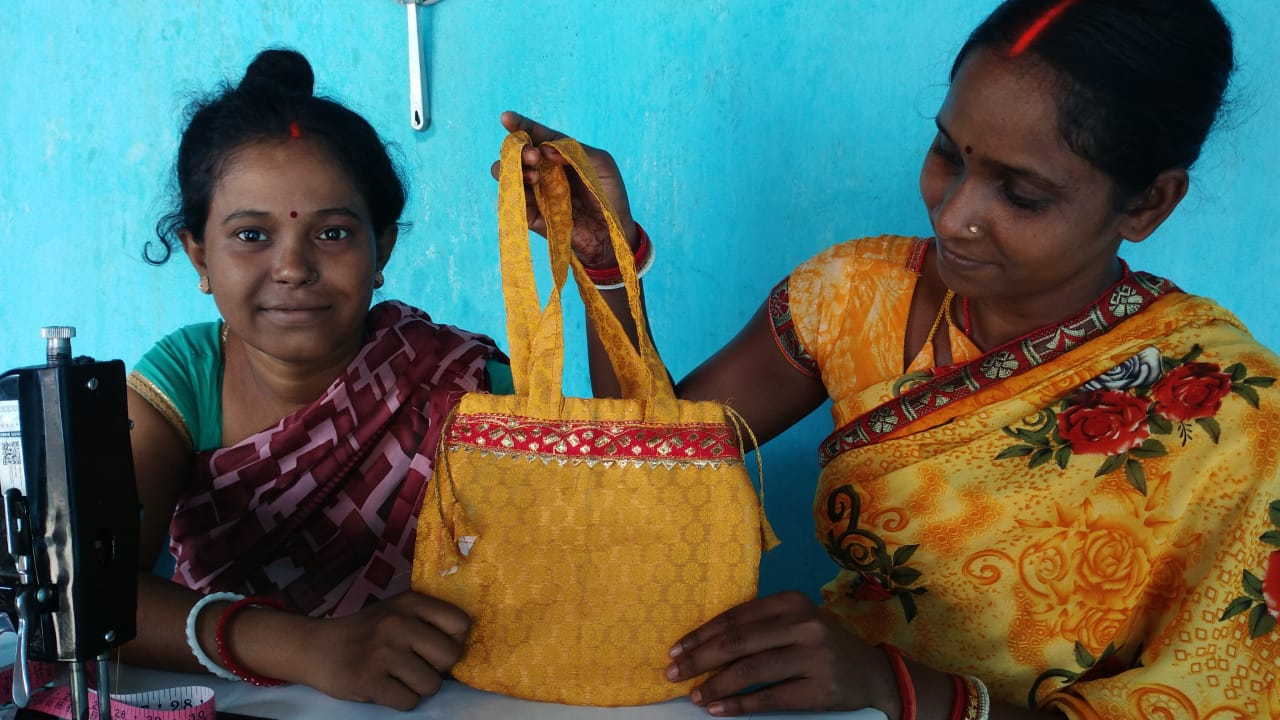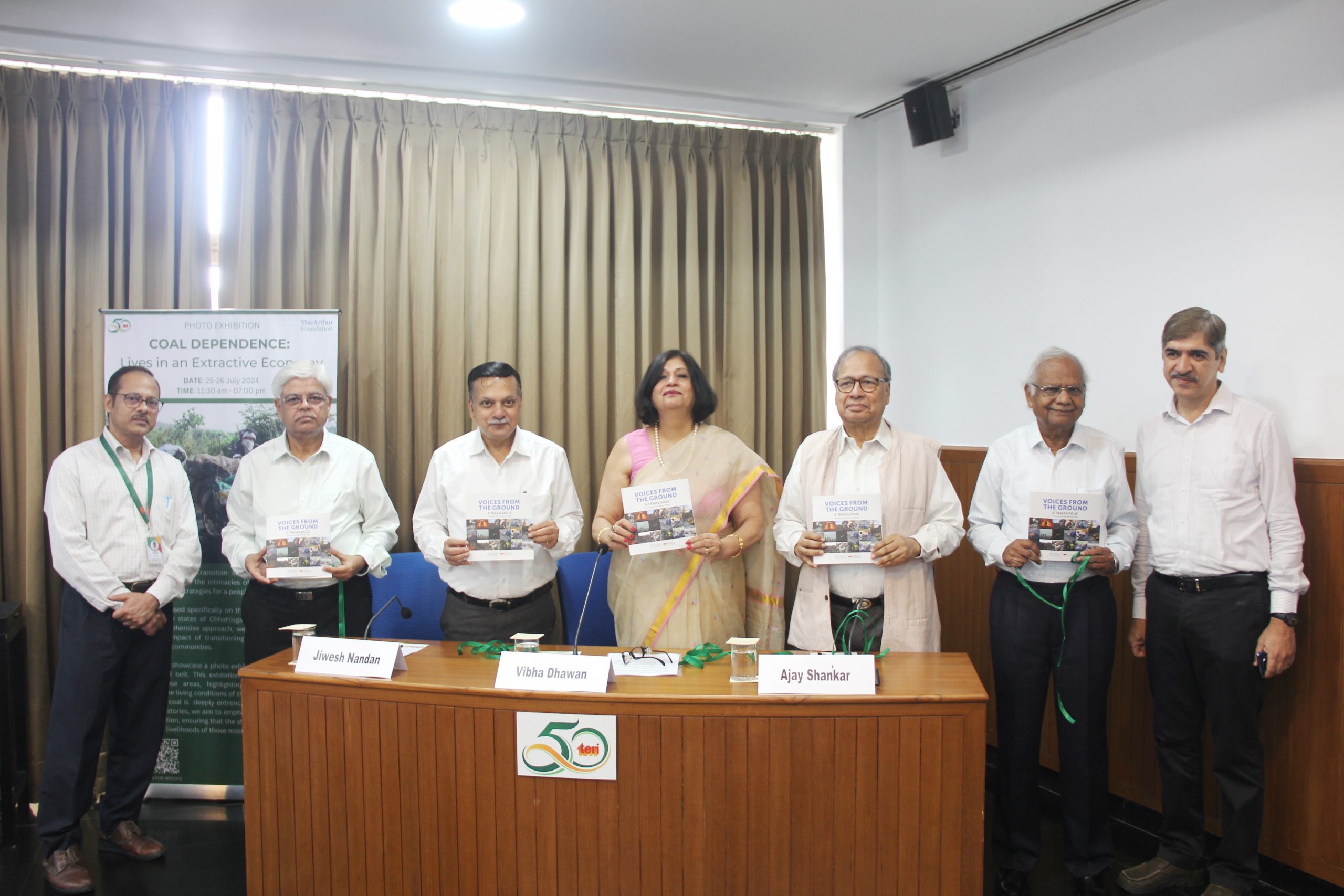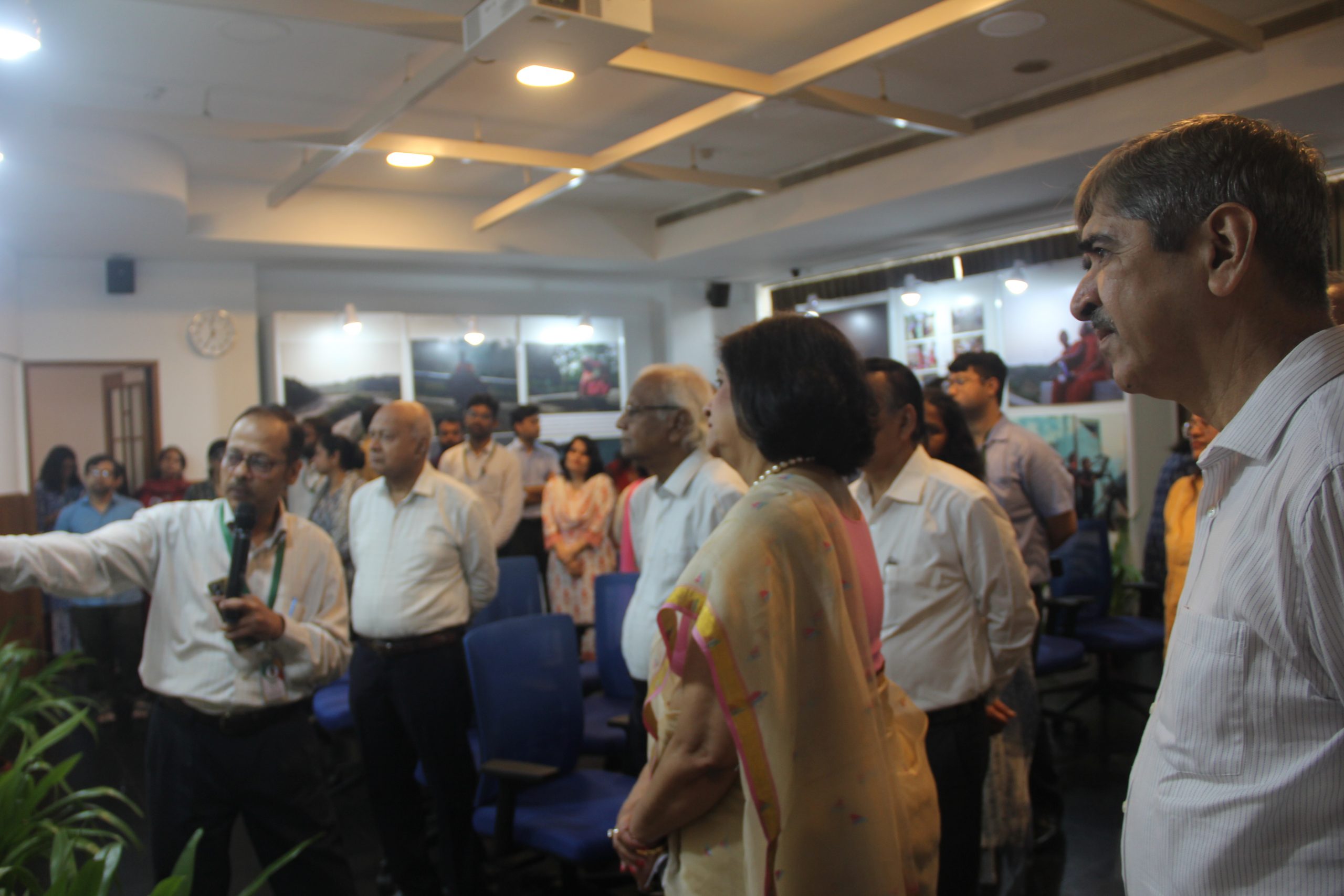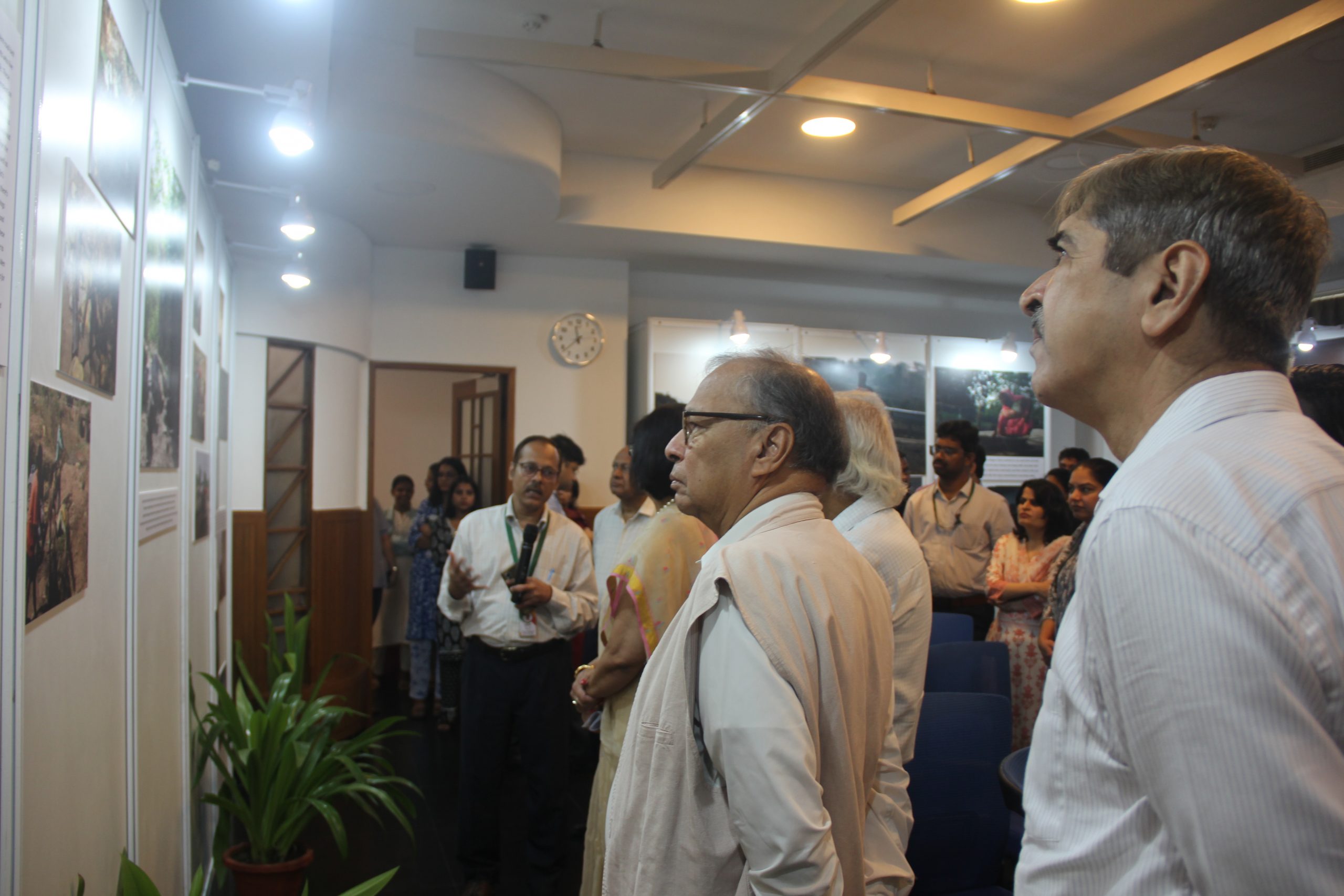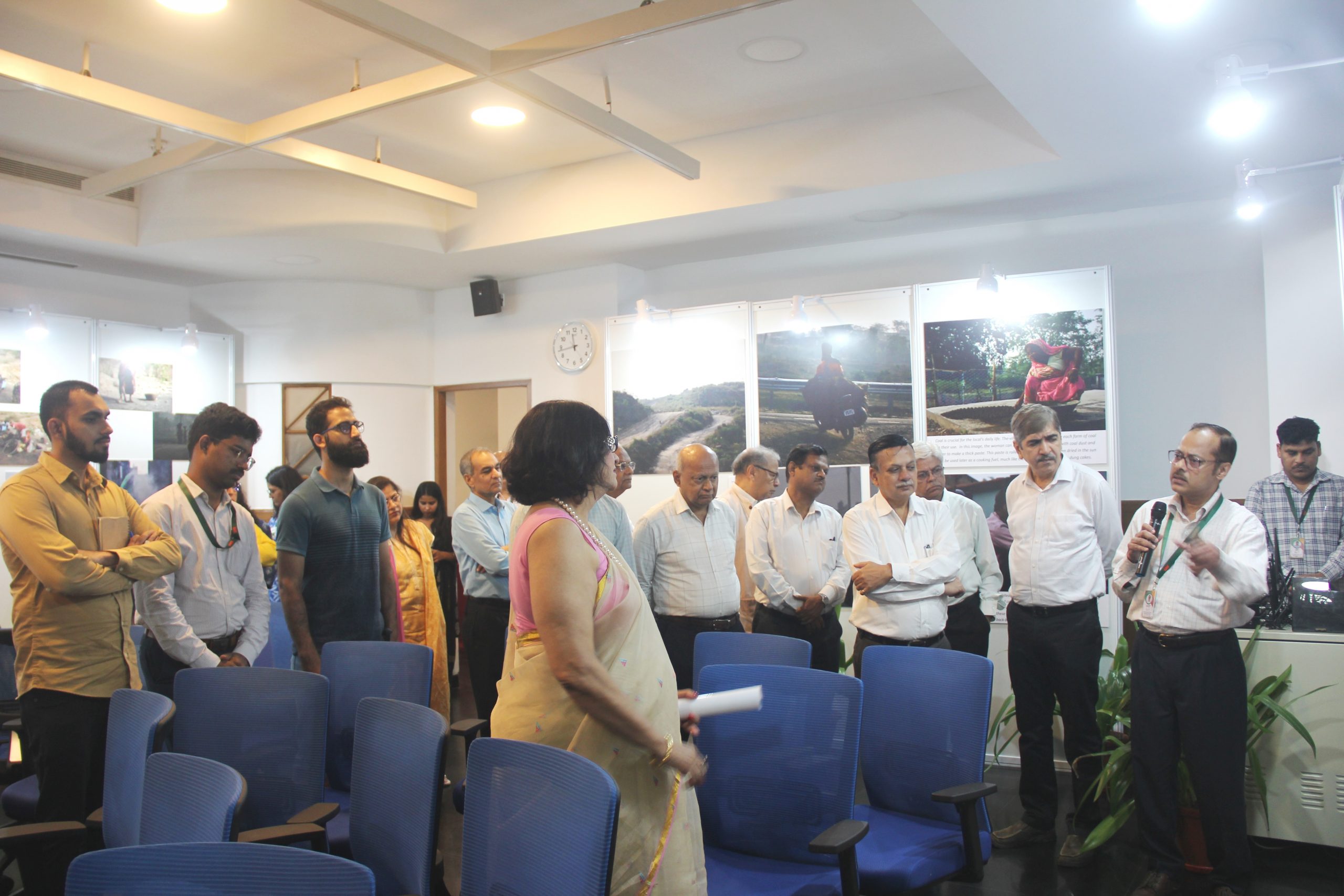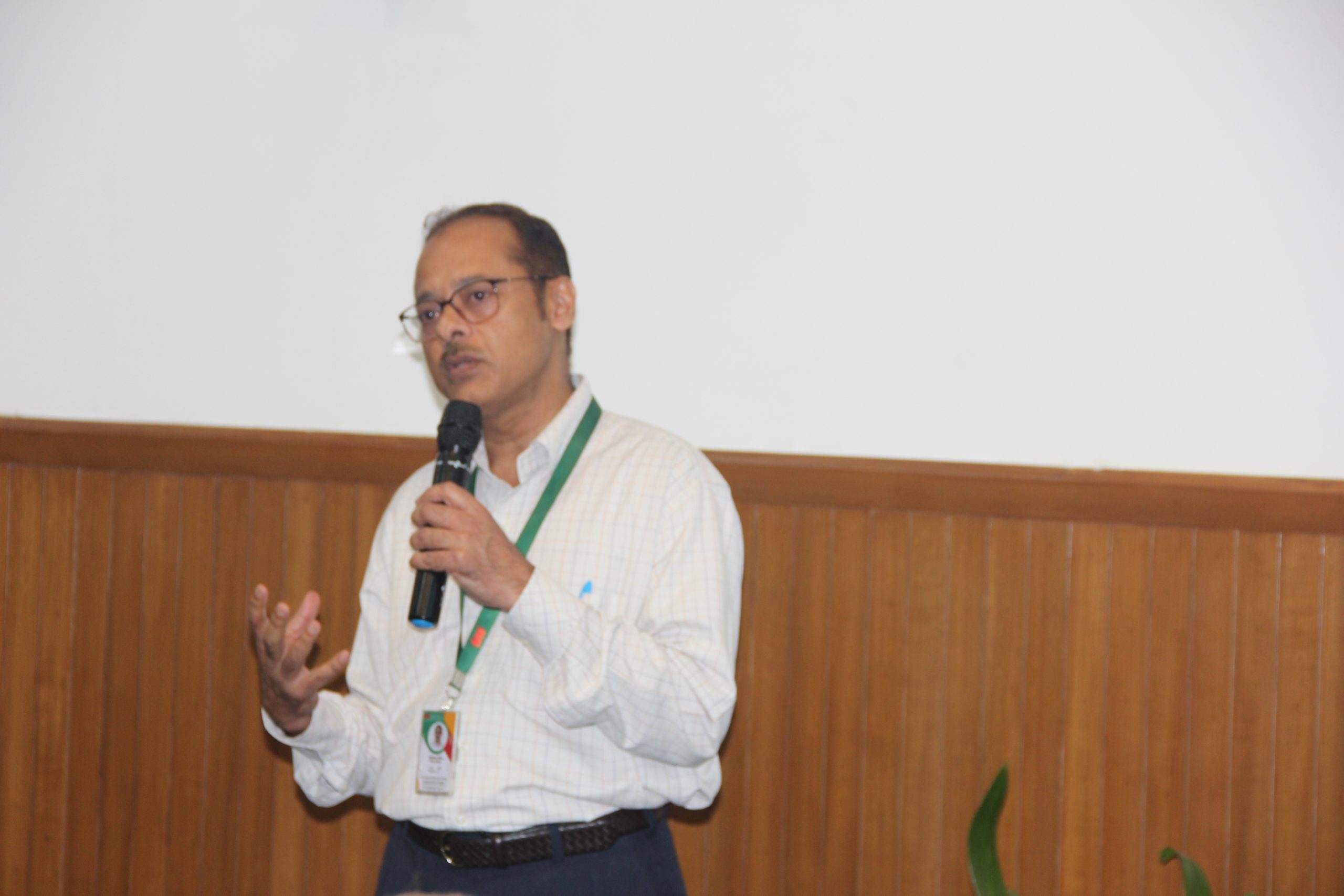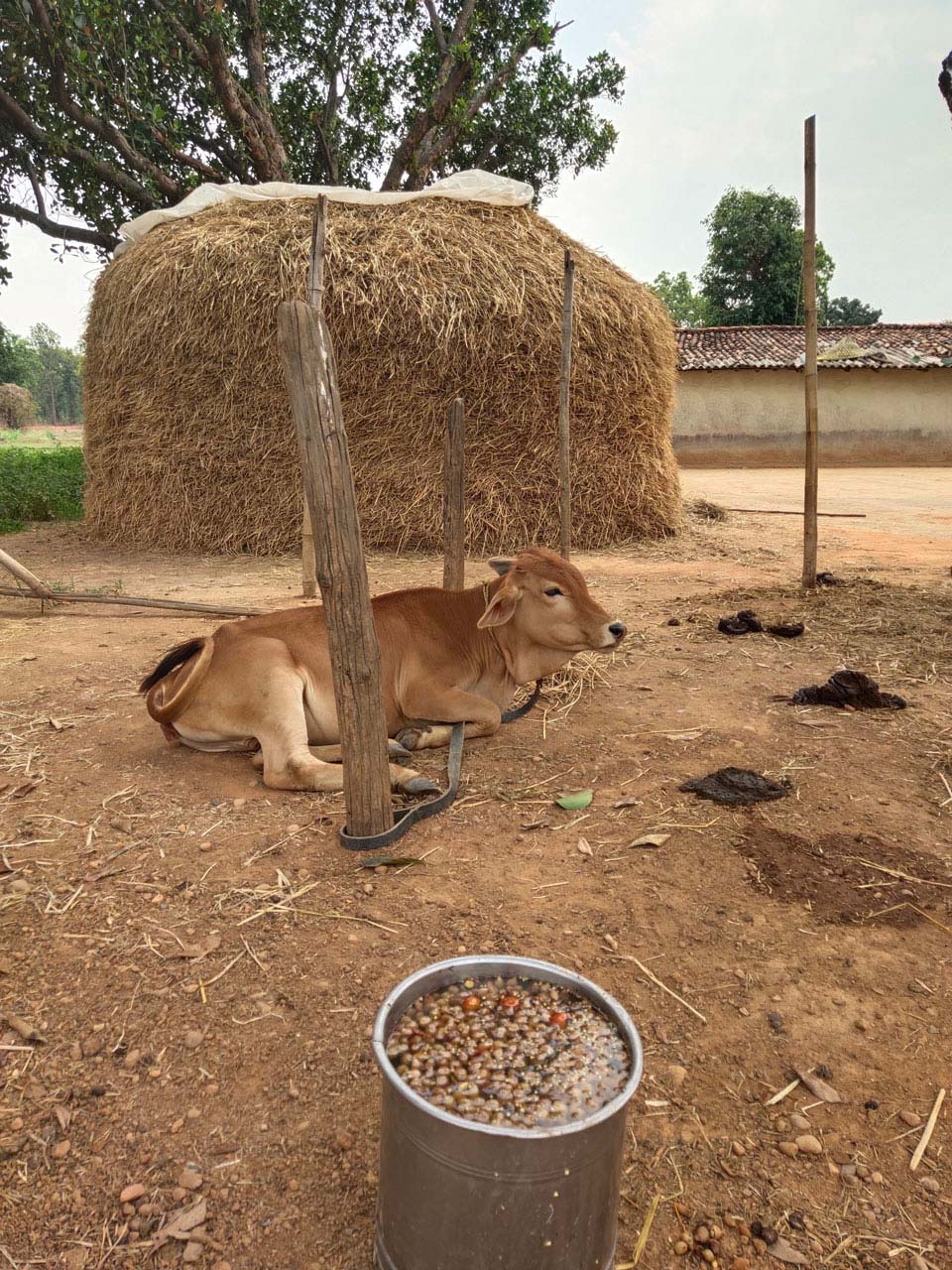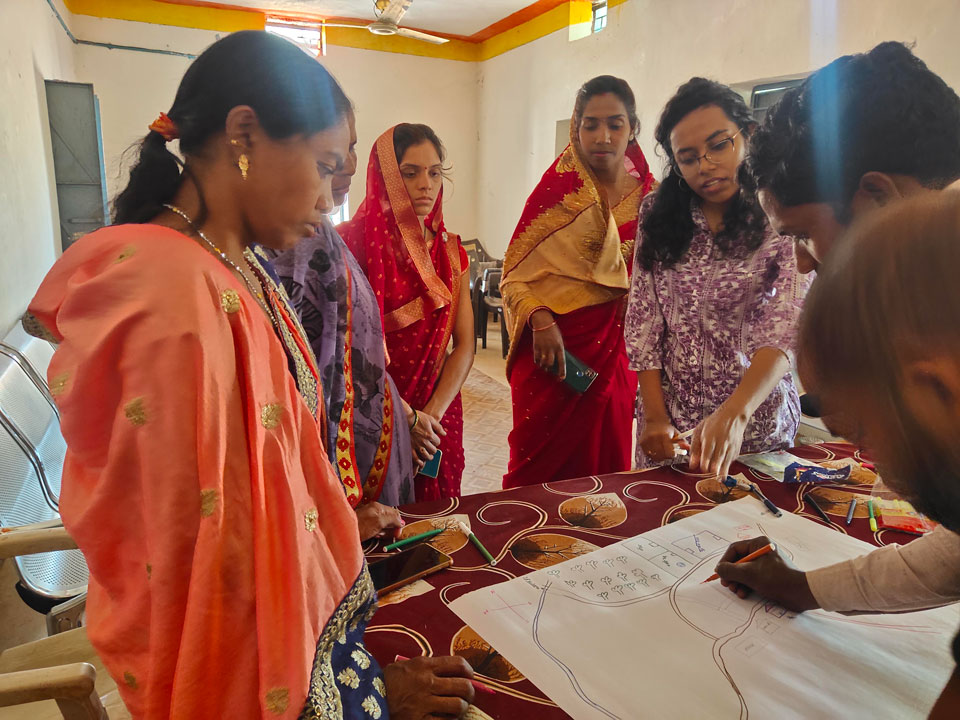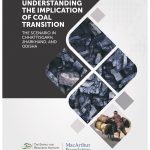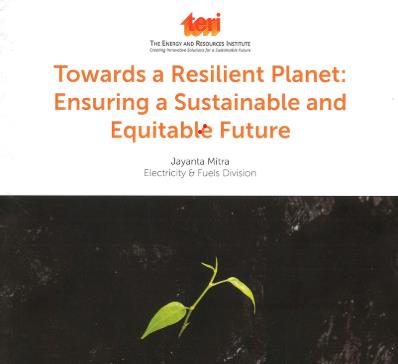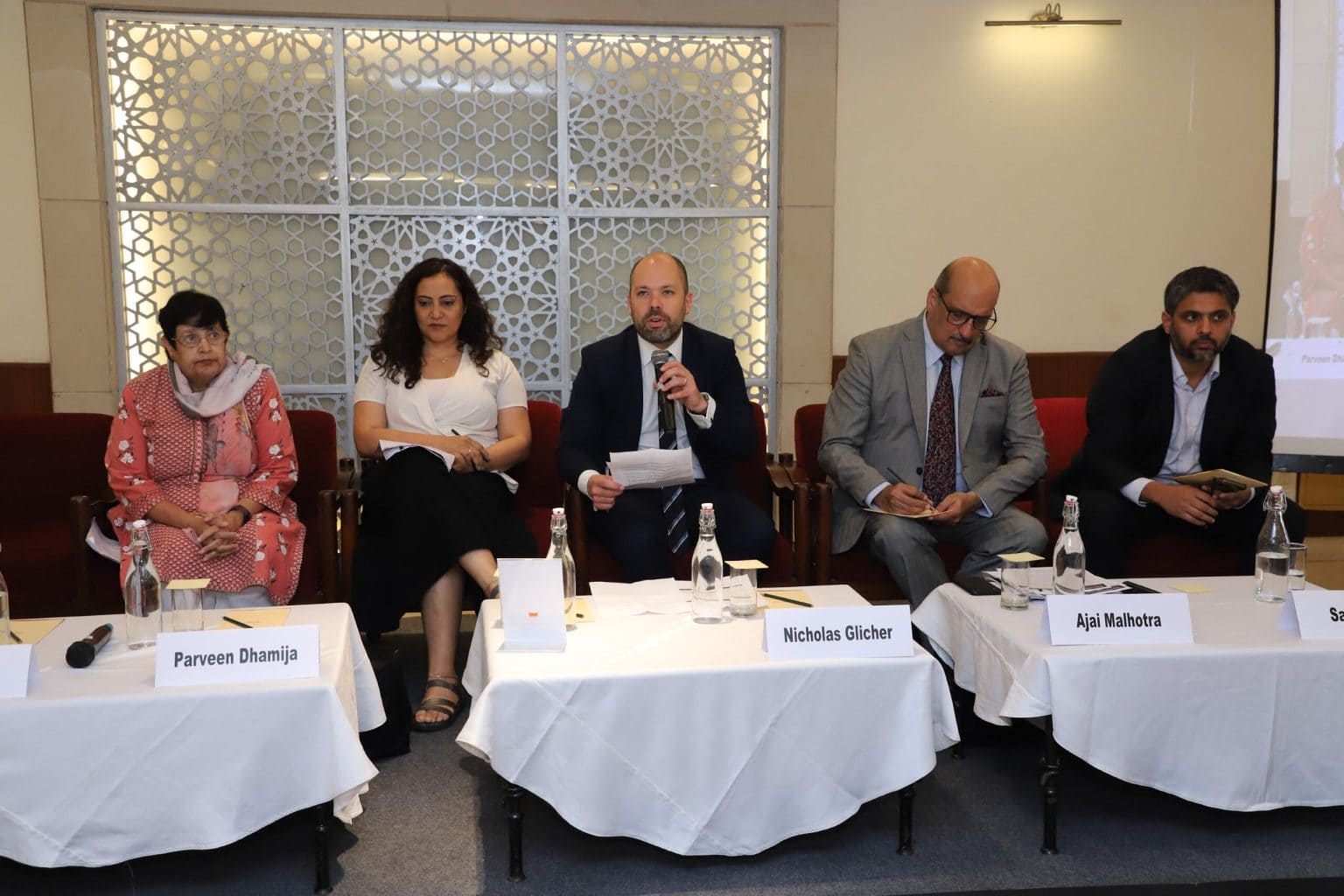Category: Spotlight
Understanding the Implication of Coal Transition: The Scenario in Chhattisgarh, Jharkhand, and Odisha
0 Comments
India’s pledge to attain net-zero emissions by 2070 significantly impacts coal-reliant people, especially in the states of Chhattisgarh, Jharkhand, and Odisha. The report “Understanding the Implication of Coal Transition” analyses the socio-economic vulnerabilities resulting from coal mine closures and the ensuing reduction in coal-dependent lifestyles. The study, conducted by The Energy and Resources Institute (TERI) with assistance from the MacArthur Foundation, utilises a mixed-method research strategy comprising community interviews, Focus Group Discussions (FGDs), and socio-economic surveys. This methodology guarantees a thorough evaluation of the complex issues encountered by coal-dependent communities, examining their effects on human capital, natural resources, infrastructure, social networks, and financial stability.
The findings indicate that the shift from coal entails considerable socio-economic upheaval, with job losses and environmental deterioration identified as major issues. The research underscores diminishing employment prospects, insufficient healthcare infrastructure, water pollution, and land degradation as key vulnerabilities exacerbating the problem for coal-dependent communities. These obstacles are classified within the Five Capitals Framework—Human, Natural, Physical, Social, and Financial—each signifying essential aspects of resilience and vulnerability. The report recommends a set of specific initiatives to enable a Just Transition. Essential recommendations encompass reskilling initiatives for displaced workers, financial inclusion strategies to facilitate alternative livelihoods, environmental restoration projects, and gender-sensitive policies to promote inclusive development. The study emphasises the necessity of a participative and equitable transition plan that protects impacted communities while furthering India’s clean energy objectives through the integration of these measures.
Event Gallery
PILOT INITIATIVE FOR A PEOPLE-CENTRIC TRANSITION IN GIRIDIH, JHARKHAND
0 Comments
We are proud to share that during the past five months, we’ve made a relentless effort in testing an idea of economic diversification in the coal belt region of Giridih, Jharkhand. We created a pathway for putting our words into action to demonstrate how a successful transition away from fossil fuels could be realized. This pilot was specifically aimed at women and adolescent girls in the Giridih open cast and Kabribad coal mines, whose lives are intrinsically linked with the local coal economy. The target group was females between 18-45 years of age who had basic reading, writing, and numerical skills. The objective was to impart both technical and soft skills to them, enabling them to plan their entrepreneurial journey. Through this intervention, we aimed to make them future-ready by enhancing their skills, which would, in turn, build their confidence and help them establish themselves as self-reliant business entrepreneurs.
As part of the well-thought-out strategy, around 160 women (40 from each gram panchayat—Kongdi and Karharbari from Giridih OC, and Chilga and Tikodih from the Kabribad mining area) were selected and provided with financial literacy training. This was done using workbooks on basic financial concepts such as income, savings, loans, and investments. From this larger group, 80 women were selected to participate in a business generation idea workshop. During this workshop, they brainstormed and discussed potential businesses that could survive and thrive in the region, while also learning about the requisite qualities to sustain these activities. This was followed by a rigorous market mapping exercise to understand the market’s demand-and-supply potential and to gauge the competitive landscape.
Once this was completed, a total of 60 women were selected for the next phase, which involved technical training for business start-ups. During this phase, they were imparted skills to start manufacturing products that have demand in the local market. The women short-listed making products like incense sticks, mops and wipers, home décor items such as cushions and designer bags, as well as beautician training, as potential business ideas. They were provided with machines for collective use to manufacture incense sticks and mops/wipers and taught how to operate these. Similarly, training was provided for stitching designer bags and running beauty parlors. Local trainers were hired to impart the necessary skills to these women.
In the final stage, 49 women came forward to join this collective effort through the formation of Joint Liability Groups (JLGs) at NABARD and started their businesses. Special effort was made to establish connections with the market, vendors were identified, and work orders were procured to create a sustainable supply chain. We are immensely proud to share that five types of enterprises were started by these women: incense stick production, mop and wiper manufacturing, production of home décor items such as handicraft cushions, cloth and jute bag production, and beauty and wellness services. These enterprises include four group enterprises and eight individual start-ups.
The effort put in over these past months has brought to the forefront stories of confidence, success, and the willingness to lead a life different from before—a life of improvement and betterment. The women wake up with a renewed hope of an alternative reality—a reality they are shaping themselves. They have mentioned how this initiative has instilled in them a sense of purpose and drive. We’re glad to note that this newfound voice and dignity have enabled them to make their own decisions and move forward with this pilot initiative.
Event Gallery
Leave a Reply
Coal Dependence: Lives in an Extractive Economy Photo Exhibition
0 Comments
The photo exhibition, “Coal Dependence: Lives in an Extractive Economy,” held from July 25th to 26th, 2024, at the TERI, India Habitat Centre, brought attention to the lives of communities deeply intertwined with the coal economy. Curated as part of the “Just Transition: Understanding and the Implications of Moving Away from Coal” project, supported by the MacArthur Foundation, the exhibition showcased a series of compelling visuals that highlighted the everyday struggles of individuals engaged in coal-related activities. From extraction to transportation, these photographs poignantly captured the vulnerabilities faced by those who rely on coal for their livelihood, emphasizing the urgent need for alternative income opportunities in the shift towards cleaner energy.
Inaugurated by Dr. Vibha Dhawan, Director General of TERI, the event also featured the release of “Voices from the Ground: A Travelogue,” documenting personal stories from India’s coal belt, and a video documentary titled “As She Changes: Seeding People-Centric Transitions in India’s Coal Belt.” The documentary highlighted efforts to empower women in Giridih, Jharkhand, by fostering entrepreneurship and building self-sustaining businesses. Together, these initiatives underscored the importance of adopting a people-centric approach in the energy transition, ensuring that those most affected by the shift from carbon-intensive energy sources are supported and included in the transition to a sustainable future.
Event Gallery
Leave a Reply
LABOUR INFORMALITY IN THE COAL PRODUCING GEOGRAPHIES IN INDIA: ISSUES AND PERSPECTIVES
0 Comments
This edition focuses on the theme of “Labour Informality in the Coal-Producing Geographies in India: Issues and Perspectives,” emphasizing a people-centric transition. We have curated a range of perspectives from academics and researchers to emphasise the pressing requirement for a human-focused strategy in the wake of transition to sustainable energy.
As we look to a future powered by greener sources of energy, aligning with India’s net-zero goals, the need to reduce our reliance on coal is of utmost signfi cance. This change would, however, have a direct impact on informal labourers who rely on coal for their living and frequently lack alternative employment prospects or means of social security. It is imperative to prioritise the inclusion of coal workers, especially those who are informally engaged, to ensure their degree of vulnerability is minimised. The purpose of this issue is to create a sense of urgency and need for collaborative eff orts that directly tackle the diffi culties experienced by those reliant on the coal economy in varied ways.
Event Gallery
Leave a Reply
GROUND SCENARIO IN SARANGIJHARIA IN SUNDARGARH (ODISHA) A REFLECTION ON POSSIBILITIES AHEAD
By Ayushi Saharan, MA Sustainable Development Practice student at TERI SAS, based on her field visits during an internship at TERI ![]()
![]()
0 Comments
As we arrived at Sarangjharia, a village about 12 kilometers away from coal mine, we found the locals gathered around a tree with baskets in their hands, waiting for a man climbing the tree in front of us to get them some jackfruit. This is symbolic of the quiet and simple life that people live in the village which is not yet claimed by any mining companies and hence the area remained untouched by any major industries as yet and the village coexist with nature.
According to the villagers, while the majority are engaged in agriculture, one-fourth of the residents are engaged in temporary labour work at MCL. The fact that most of the mine related work is outsourced, the local labour force is drawn from the surrounding villages by the contractors. Given the short duration of employment, fear of exclusion and losing the chances of wages earning opportunity, and due to the lack of alternative employment opportunities around, locals often accept what they are offered. Ironically the poor and uneducated labour force are hardly aware of the nitty gritty of CMPF (Coal Mine Provident Fund) and neither do they have the courage to to inquire about CMPF funds and other deductions from their wages during this short-term engagement by the contractors. Owing to blocked opportunities the labour force complies with norms imposed by the contractors and hardly get a chance to voice their grievances. In the informal labour sector they lack any safety net and hence remains vulnerable. Basic rights of rural populace in and around the coal belt are often denied and dignity gets compromised. It raises questions about access to fair wages, safety net, social security system, quality education and health opportunity, and access to healthy work environment. Over dependence on coal and mono-industry also creates a monopoly and in a way that it restricts growth of other livelihood choices and its market promotion. A balanced view of diversified livelihood options creates market opportunities, enterprises, offers greater choices and competition across multiple players who engage labour and this also provides a space for bargaining and an urge for fairer practices in labour engagement.
An important alternative source of income for the locals comes from forests. Collection of mahua flowers and kendu leaves fetches households an average income of 10,000-30,000 rupees within 1-2 months. The collection is usually done by women and children, bundles are made by men and collected by the forest department for making secondary forest based products.
Agriculture, however, is the main source of income of the village. But it has suffered primarily due to labour unavailability. While the locals can offer 200 rupees as daily wage to work on the fields, MCL offices offer 300 rupees. Therefore, residents prefer to engage in labour work rather than working on fields. However, the older generation and women play an active role in keeping agriculture alive in the village. The staple crops sown and produced are corn, rice, and seasonal vegetables. The fields are rainfed, and surplus is sold to the local weekly market. While schemes like MGNREGA is functional in the village, Ujjwala, Swacch Bharat, Ayushman Bharat, PMJAY, health card issued by state government, and other policies linked to farmer’s welfare doesn’t seem to be reaching the people in the area. In a way, people lack the knowledge about several such schemes and hence could not benefit from these schemes.
Today’s youth in these villages are often allured to pick up non-agricultural wage labour particularly in any coal dependent industry settings. Young boys of Sarangijharia are also known to migrate in groups to cities like Goa for work in fishery sector, work for six to seven months, and return back with the earned income (about 30000-40000) only to spend it away on alcohol. Therefore, the money earned is hardly invested in the region in a productive manner.
The problem of alcoholism is said to be further aggravated by the mining activities given the influx of migrant truck drivers from different states who drive up the demand for alcohol. In the village itself the residents indicated that some households make alcohol using chemicals to derive some additional income. Several cases of loss of young lives owing to consumption of country made liquor have been reported.
Coal industry, MCL in this case and DMF can play crucial role in mapping vulnerable pockets, carrying out a socioeconomic baseline, assessing skill, resource and information gaps, and develop a blueprint in consultation with the credible research institutes and development practitioners to enhance the living condition of people living in and around the coal belt. As part of the Just Transition initiative, it would be logical to impart new skills, enhance sustainable agriculture, demonstrate and encourage adoption of greener practices in manufacturing of local products, and promote diversified livelihood strategy, enhance financial inclusion, health awareness and safety nets. All in all, such measures will help minimize vulnerability, build resilience and improve the quality of life of the poor people living in and around the coal belt. The plans must include those who are engaged in coal sector as contractual labourers and their families but also others who are daily wage earners, agricultural workers, who depend on others’ land and also other socially backward sections who often get alienated or left behind due to their backwardness.
Event Gallery
Leave a Reply
Local NGO perspective
By Dr Jayanta Mitra, Senior Fellow TERI ![]()
![]()
0 Comments
The thought of transition drives one to think of the immediate impact on life and livelihood, local economy, businesses, and the possibilities ahead. Coal phase-out will hit the local people and the labour force hard as they are excessively dependent on coal. Hence, detailed PRA (participatory rural appraisal) and micro-level livelihood planning are essential. A skill centre needs to be established or convert certain industrial facilities into training hubs that local people can access and gain from it. Advocacy with State and industry is crucial.
Agriculture and agri-allied activities, adoption of high-value agricultural practice, organic vegetable hub promotion with market linkage (through a tie-up with NABARD), aggregation centre and end to end solution (seeds to market), etc. would be the proposed action points to minimize potential risks in the wake of coal phase-out. This would address food security challenges and check distressed migration.
Youth entrepreneurship (market assessment, generating micro-enterprise ideas, input supply, value addition, market negotiation) promotion is the key towards promoting a vibrant local economy.
Jharkhand is known for its abundant forest land and forest produce. Technology should be leveraged meaningfully to generate business. For instance, the installation of an oil expeller (could be solar operated) can help market oil from locally available oil seeds and achieve a scale that can engage local poor and tribal communities who are dependent on the forest. Along with this, mobilization of farmers collectives, formation, and strengthening of FPOs, institutional linkages, digital solutions, multi-stakeholder coalition (GO-NGO-CSR-Technical/Research institute) for effective advisory, disease control, market negotiation, etc. Further, existing local or artisanal knowledge and skills need to be mapped and marketed around that may be created for gainful engagement of the local populace.
Systematic documentation of the existing and perceived challenges in the context of coal transition and open multi-stakeholder dialogue on the theme may enable in comprehending the complexity and map opportunities and possible action points.
Event Gallery
Leave a Reply
REPURPOSING COAL ASSETS FOR A SUSTAINABLE TRANSITION
0 Comments
I am pleased to announce that we are back again to place before you the 5th edition of our bi-annual Newsletter – ‘Vichaar
Vimarsh’ and share rich perspectives of researchers, academia, professionals from coal companies, civil society and think
tanks around the core theme of “Repurposing of coal assets for a sustainable transition”. I am sure such an exchange of
knowledge will not only connect various stakeholders who are willing to engage actively in charting out a new trajectory
and contribute in building a low carbon economy.
Event Gallery
Just Transition: Future of Coal & Pathways to Low Carbon Footprint
0 Comments
TERI, in partnership with the Indian Institute of Technology (Indian School of Mines), Dhanbad, hosted a seminal national seminar on “Just Transition: Future of Coal & Pathways to Low Carbon Footprint” in Kolkata on January 31, 2024. This pivotal seminar brought together leading figures from the energy sector, academia, and policymaking to discuss the pathways for India’s energy transition from coal to sustainable alternatives. It served as a dynamic forum for examining innovative solutions for the reutilization of coal mines, green support for coal-dependent MSMEs, and the development of a sustainable, equitable transition framework. The discussions were underpinned by the urgent need for a Just Transition, focusing on safeguarding community and worker welfare amid the move from coal, and included debates on policies for retraining, social protection, and fostering job growth in new, green industries. The seminar’s agenda was thoughtfully designed around thematic sessions on repurposing closed mines, enhancing economic competitiveness alongside environmental sustainability, and opportunities for reskilling in green jobs. A concluding plenary session dedicated to co-creating actionable strategies for a resilient, low-carbon future in the coal sector underscored The seminar had a structured agenda that included an introductory session, Thematic session I: Repurposing of closed mines and diversification of the local economy, Thematic session II: Balancing Economic Competitiveness and Environmental Sustainability: Green Transition for Coal Dependent MSMe’s, Thematic session III: Reskilling and Upskilling for Green Jobs – Opportunities as the Coal Sector Transitions to a Low-Carbon Economy and Plenary session: Charting a Sustainable Path: Co-Creating Action for a Low-Carbon, Resilient Future in the coal sector.


